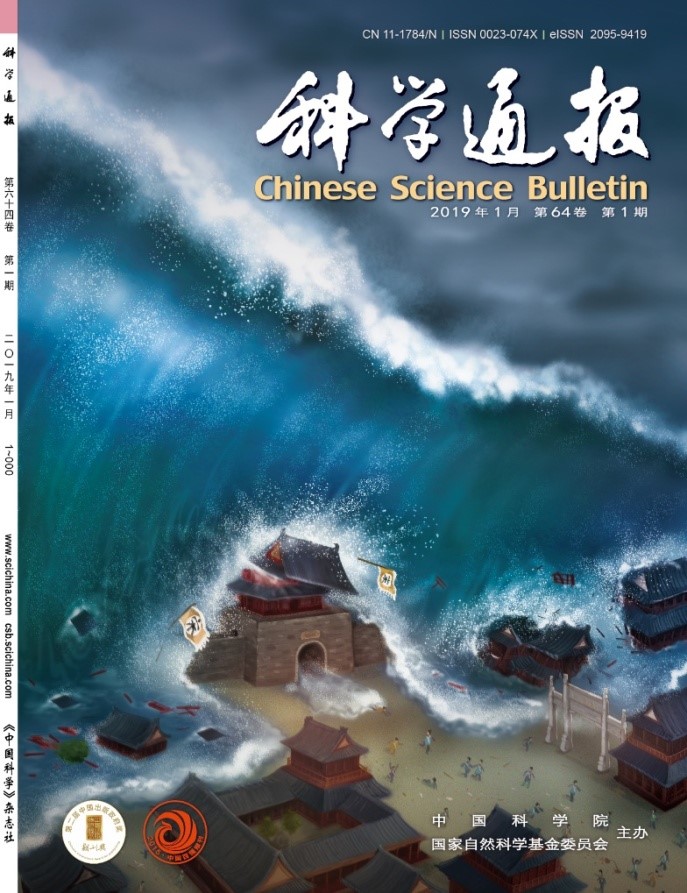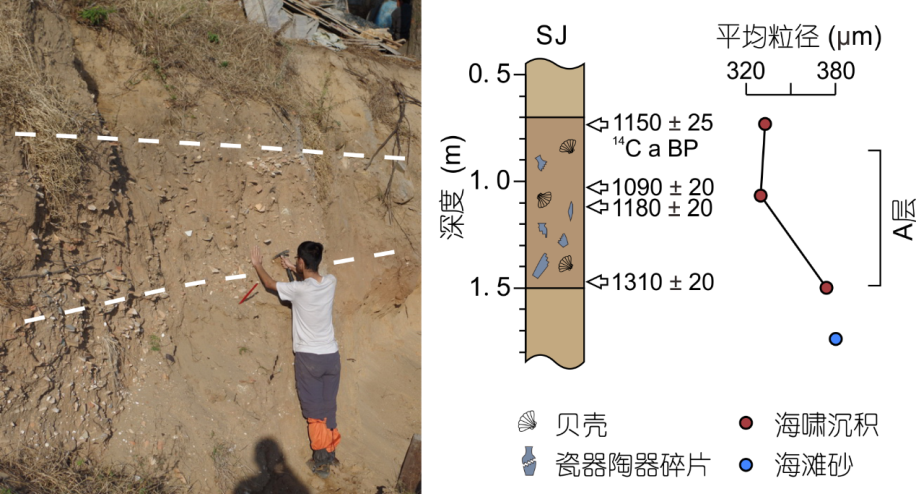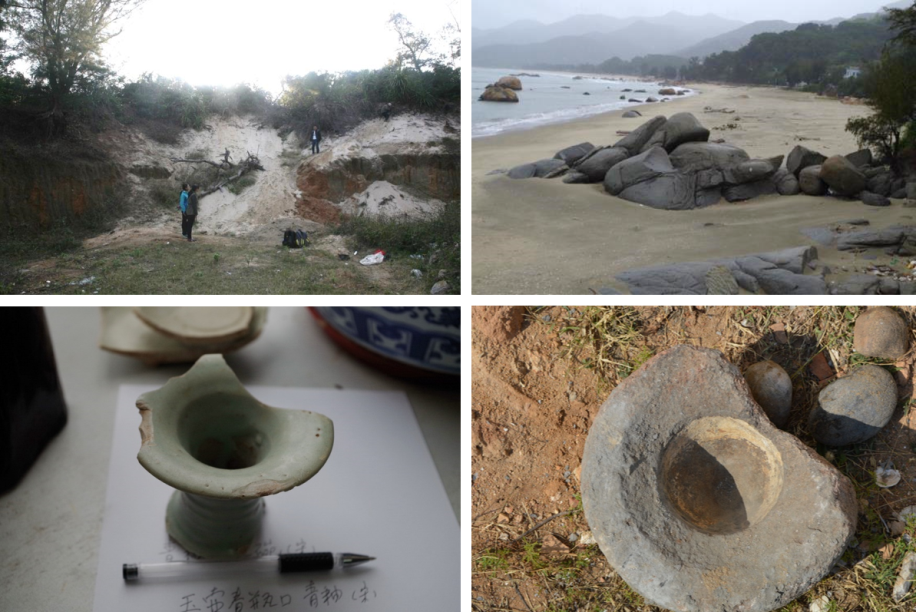Evidence showed that a tsunami occurred in the South China Sea and struck the island about a thousand years ago. Results of tsunami modeling indicated that the possible trigger of the tsunami is an earthquake in the Manila Trench, and the coastlines of Guangdong, Hainan Provinces of China and those of Thailand were affected by the tsunami.

Cover of Chinese Science Bulletin. / Image by Prof. WANG Guoyan
According to an article published in the Chinese Science Bulletin, a research team led by USTC conducted a geological investigation on Nan’ao Island of Guangdong Province to explore the influence of the South China Sea tsunami. Tsunami deposits were identified in the coastal sedimentary profiles, and the radiocarbon ages of the samples are about 1000 years ago, identical to the age of the tsunami hitting Dongdao Island. The deposited layer contains small marine shells. The sedimentary samples have the same grain size distributions with the coastal sands, suggesting that the deposits have a coastal or nearshore sand origin.

Tsunami deposits were identified in the coastal sedimentary profiles./Provided by SUN Liguang'team.
The researchers analyzed the temporal distribution of the cultural relics of Nan’ao Island and found that the amount of the relics significantly decreased after the tsunami and remained low until the late Ming dynasty. The deposited layer also contains shards of ceramics, which were identified as Song dynasty ceramics. There were no ceramic remains before and after the Song Dynasty. Besides, more than 15000 ancient coins were retrieved in Nan’ao One, a shipwreck 2 km south off Nan’ao Island, and the characters on the coins indicated that they were produced 69 years before the tsunami. Taking the chronological data recorded by historical archive into account, the researchers conclude that the tsunami occurred in the South China Sea in 1076 AD.

Deposit layer, boulders, shards of ceramics and stone motar found in Nan’ao Island, Guangdong Province./Provided by SUN Liguang'team.
It still remains unknown whether the coastline of mainland China was ever hit by tsunamis due to the lack of geological investigations and reliable historical records. This study shows the cultural consequence of the tsunami and suggests archaeological excavation of the Song-dynasty relics of Nan’ao. Recent evidence indicates a drastic cultural decline caused by the tsunami. This study confirms the risk of tsunamis in the South China Sea. Such risk should be taken into consideration in future planning and construction of nuclear power plant, harbor and petroleum reserve structure in the coastlines of China.
The research was led by SUN Liguang and XIE Zhouqing research team of USTC and Anhui Key Laboratory of Polar Environment and Global Change. YANG Wenqing, a PhD candidate from the School of Earth and Space Sciences, is the first author of the article.
See more at:http://engine.scichina.com/doi/10.1360/N972018-00740
(Written by XU Yue, edited by SHI Xiao, USTC News Center)